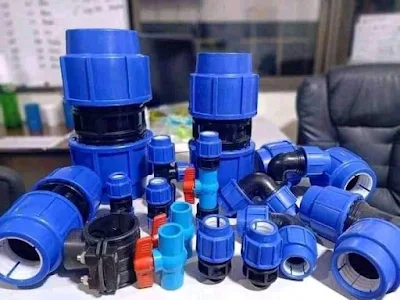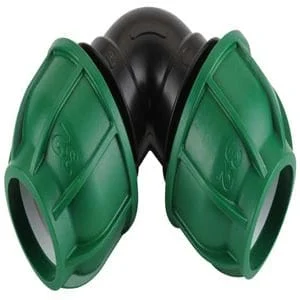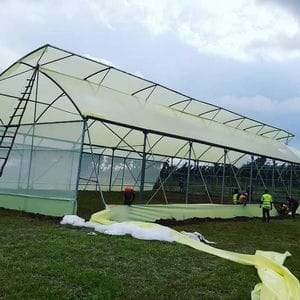Irrigation fittings in Kenya are used in Hdpe pipes, drip lins, water pipes and gas pipes. Irrigation is an essential process in agriculture, especially in Kenya where water scarcity is a significant challenge.
Modern irrigation techniques such as drip, sprinkler and splash irrigation have become popular, and for efficient water distribution, different fittings are used.

Galvanized stainless steel and aluminum fittings are used with galvanized steel threaded pipes.

Types of Irrigation Fittings in Kenya:
Galvanized Stainless Steel and Aluminum Fittings:
Galvanized stainless steel and aluminum fittings are used with galvanized steel threaded pipes.
These fittings are available as valves, elbows, bends, and plugs, among others. They are durable and tough enough to withstand pressure changes in pipes.
These fittings are manufactured with screw-type joints, male and female.
PVC fittings are the most common in irrigation, and they are connected to plastic pipes. They come in three main modifications: lock connector fittings, barbed type fitting, and compression type fitting. PVC fittings are pocket friendly to acquire, maintain and replace, very strong and light in weight. They can be manipulated into various shapes and sizes and do not corrode or clog.
Valves are an essential component of the irrigation system. They come in different shapes and sizes, and their primary function is to manually open and close water flow in the irrigation system. The mainline valve is the closest component to the water source. It can be a gate valve, ball valve, or a faucet. Secondary valves can be installed along the irrigation system after the main valve but not in place of the main valve.
A back flow prevention system is required in an irrigation system to prevent irrigation water from being siphoned back to the water source in case of a sudden loss of pressure. A simple check valve might be required to do the job, but in some cases, safer methods such as anti-siphon valves or pressure vacuum breakers might be installed.
PVC Fittings:
PVC fittings are the most common in irrigation, and they are connected to plastic pipes. They come in three main modifications: lock connector fittings, barbed type fitting, and compression type fitting. PVC fittings are pocket friendly to acquire, maintain and replace, very strong and light in weight. They can be manipulated into various shapes and sizes and do not corrode or clog.
Valves:
Valves are an essential component of the irrigation system. They come in different shapes and sizes, and their primary function is to manually open and close water flow in the irrigation system. The mainline valve is the closest component to the water source. It can be a gate valve, ball valve, or a faucet. Secondary valves can be installed along the irrigation system after the main valve but not in place of the main valve.
Back Flow Prevention System:
A back flow prevention system is required in an irrigation system to prevent irrigation water from being siphoned back to the water source in case of a sudden loss of pressure. A simple check valve might be required to do the job, but in some cases, safer methods such as anti-siphon valves or pressure vacuum breakers might be installed.
Filters:
Filters must also be installed in the mainline to prevent clogging of the emitters. This is an essential component and must be installed regardless of the water source.There are two types of filters: screen filters and disc filters. Screen filters have mesh sizes that range between 50 to 200 pores per inch. Disc filters consist of a stack of closely packed disks.
For an irrigation system to operate effectively, filters must be regularly cleaned or flushed.
Irrigation systems are designed to operate with a pressure range of 10 to 30psi, but water from the source can exceed 30psi. High pressure can damage point source emitters and destroy drip lines or other components. Therefore, a pressure regulator should be installed if water is delivered through pumping from the source. Its main function is to regulate the pressure of water to the required PSI by simply turning a bolt on the regulator.
Zoning is needed if the available water is insufficient to separate plants with different water requirements so that each plant type can receive the appropriate amounts of water. Additional manual or electronic solenoid valves can be installed at scenic locations in the system. End caps or footer lines can be used at the end of the lateral line.
Pressure Regulator:
Irrigation systems are designed to operate with a pressure range of 10 to 30psi, but water from the source can exceed 30psi. High pressure can damage point source emitters and destroy drip lines or other components. Therefore, a pressure regulator should be installed if water is delivered through pumping from the source. Its main function is to regulate the pressure of water to the required PSI by simply turning a bolt on the regulator.
Zoning:
Zoning is needed if the available water is insufficient to separate plants with different water requirements so that each plant type can receive the appropriate amounts of water. Additional manual or electronic solenoid valves can be installed at scenic locations in the system. End caps or footer lines can be used at the end of the lateral line.
Plastic Fittings:
Contact us for all your irrigation Fittings in Kenya.



.png)


 20%
20%



0 Reviews
Your rating